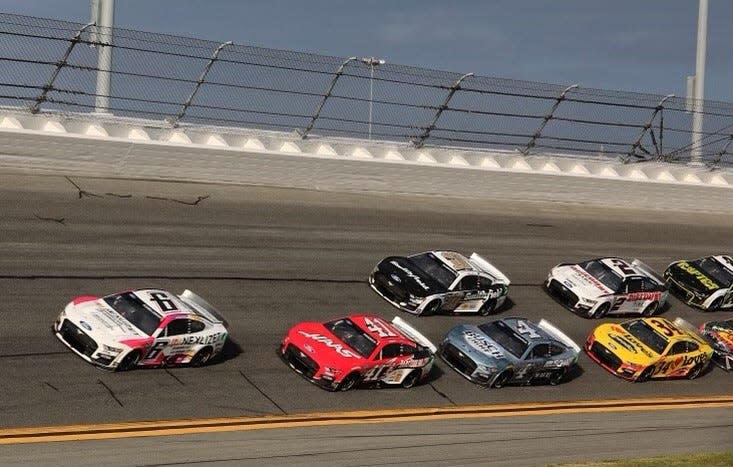Why does Daytona 500 have different stages? A guide to NASCAR stage racing

Brad Keselowski won Stage 1 of the Daytona 500 by a nose thanks to a late pass. And Ross Chastain edged Alex Bowman to claim Stage 2. New fans to racing might be asking: Wait, what are stages in NASCAR?
In the previous decade, there was plenty of chatter about bringing more action to NASCAR racing, since many (most?) races have long periods without enough action to placate the modern attention span.
Some lobbied for "heat racing," which you see on the short tracks of America on any Friday and/or Saturday night.
NASCAR isn't quite ready for that, aside from the Busch Light Clash, so in 2017 the sanctioning body came up with the ideas of breaking up races into three stages. The pending end of a stage adds some built-in urgency to two part of the race, way before those closing laps.
Daytona 500 updates: The latest from the 2024 Great American Race
How?
By offering points at the end of those stages.
How does NASCAR stage racing work?
At the end of Stage 1 and 2, the top 10 drivers receive points — first-place gets 10 points, second place gets nine, all the way down to a single point for 10th. These bonus points apply to the weekly standings.
As an additional bonus, and to add potential fireworks to the top of the field, the winner of each stage earns a point he takes with him to the playoffs, assuming he makes the postseason roster.
It all adds up, as they say.
What is the format of the Daytona 500 race?
The Daytona 500 runs in three stages where drivers in the lead can earn points. If worst comes to worst and the race has to stop, the driver in the lead after at least 100 laps or the end of Stage 2, whichever comes first, will be declared the winner.
How many laps is a stage at Daytona?
Stages 1 and 2 have 65 laps each, while the final stage is 70 laps.
This article originally appeared on The Daytona Beach News-Journal: Daytona 500 has three stages: What are stages in NASCAR?

 money
money 